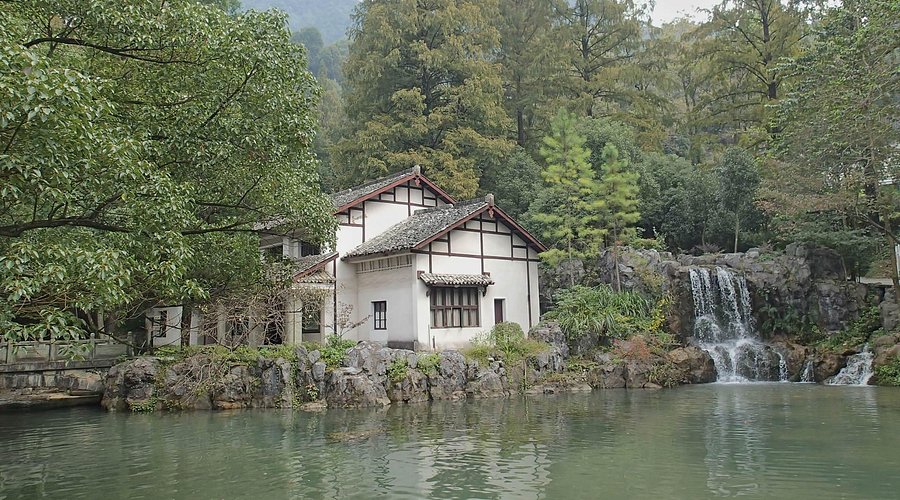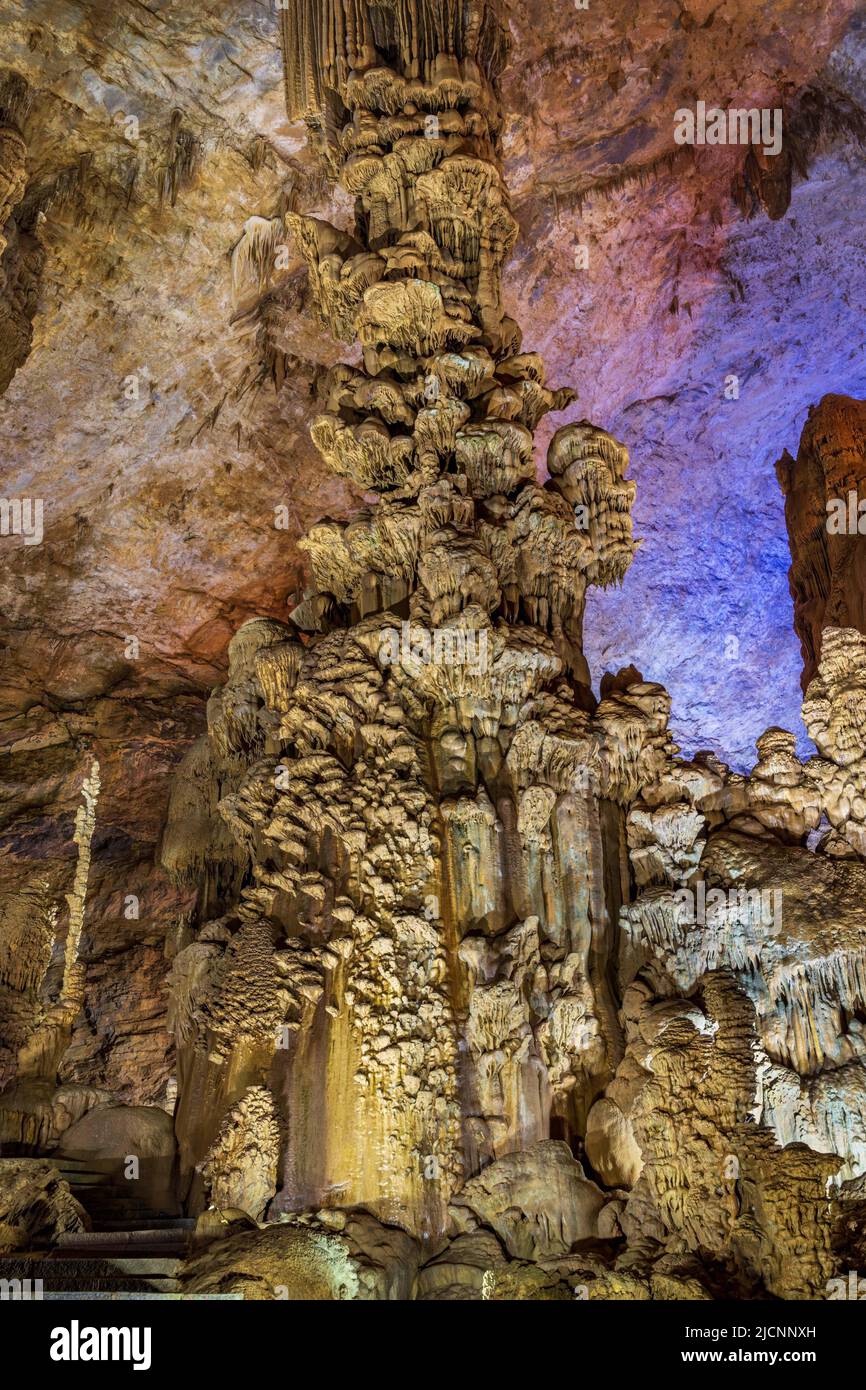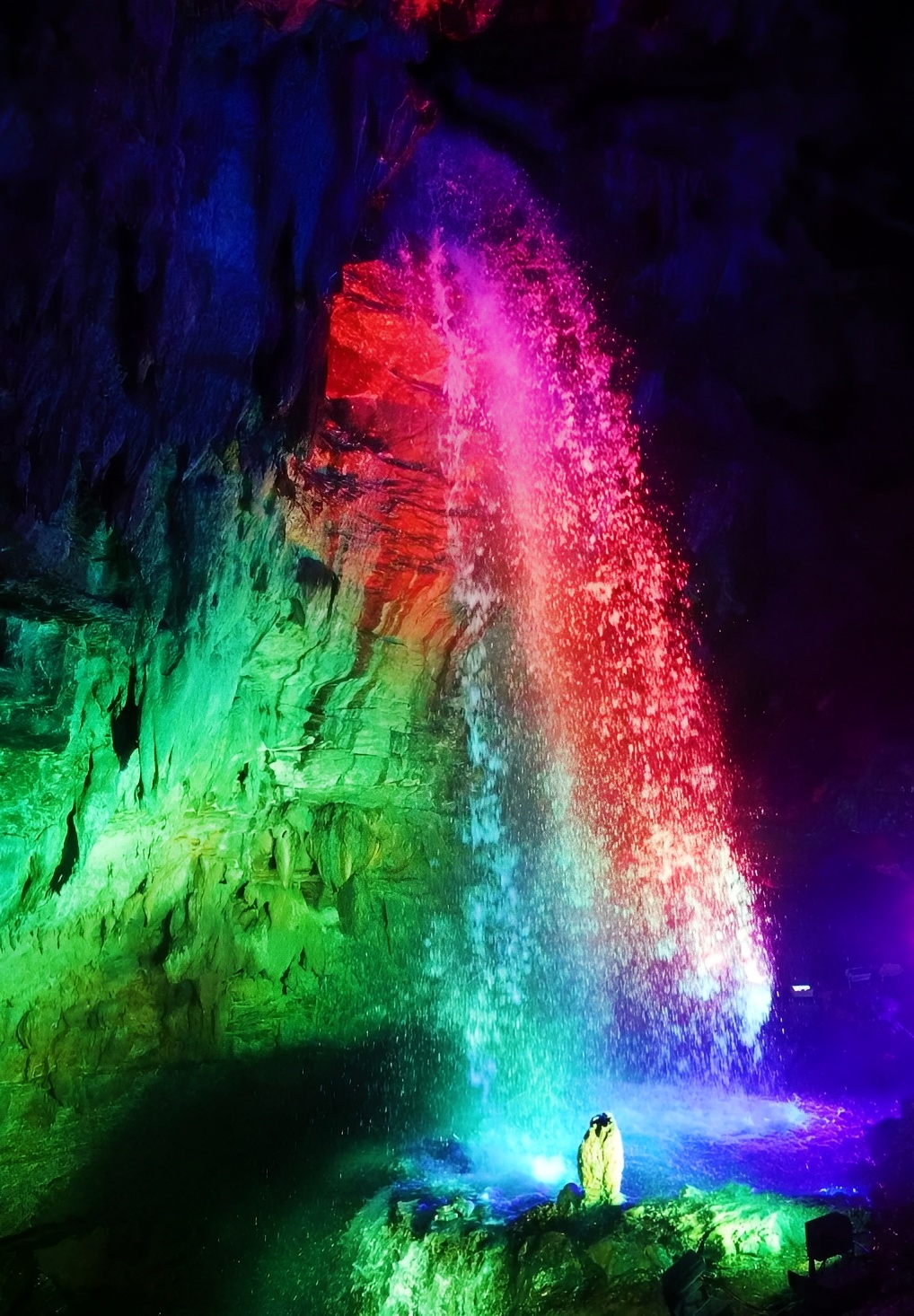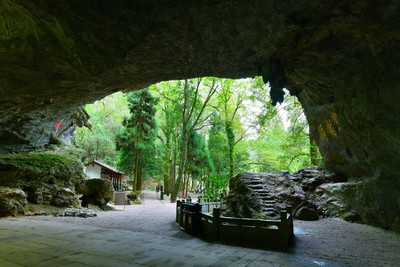Discover the Majestic Jinhua Cave Temples: A Journey Through Time

An Essential Guide to Visiting Jinhua Cave Temples
Nestled within the breathtaking landscapes of Jinhua, the Jinhua Cave Temples (金华石窟) offer a mesmerizing glimpse into China’s rich cultural and spiritual heritage. These ancient rock-carved masterpieces, dating back to the Tang and Song dynasties, are not just a testament to the artistry of their time, but also a sanctuary for reflection and reverence. As you wander through the intricate hallways adorned with exquisite murals and sculptures, you’ll find yourself transported back centuries, surrounded by the echoes of history and devotion.
Visiting the Jinhua Cave Temples is more than just an excursion; it’s an immersive experience that invites you to explore the intersection of art, faith, and nature. The caves, set against a backdrop of lush greenery and serene hills, provide a tranquil escape from the bustling world outside. Here, the soft flicker of candlelight dances across ancient stone, inviting you to pause and reflect.
Whether you’re an avid history buff, a lover of art, or simply seeking a peaceful retreat, the Jinhua Cave Temples promise to captivate your senses and enrich your journey through China. Prepare to embark on an adventure where every corner reveals stories of devotion, artistry, and the relentless passage of time.
In This Guide
- An Essential Guide to Visiting Jinhua Cave Temples
- The Rich History and Legends of Jinhua Cave Temples
- Main Highlights: What You Absolutely Can’t Miss
- Planning Your Visit: A Practical Guide
- Tickets: Prices, Booking, and Tips
- How to Get There: A Complete Transportation Guide
- Local Cuisine and Accommodation Nearby
- Frequently Asked Questions
- Final Thoughts on Your Trip
The Rich History and Legends of Jinhua Cave Temples
Nestled in the picturesque hills of Jinhua, the Jinhua Cave Temples (金华石窟) stand as a testament to the region’s rich historical and cultural tapestry. Dating back to the Southern Tang period (937-975 AD), these extraordinary cave formations were crafted over centuries, showcasing the artistic prowess and religious devotion of their creators. The temples represent a unique fusion of Buddhist art and local folklore, making them a must-visit for international travelers seeking to delve into China’s spiritual heritage.
As you wander through the intricate rock-carved structures, it becomes evident that these temples were not merely places of worship; they were vibrant centers of community life. The caves served as sanctuaries for monks and pilgrims, offering a serene atmosphere for meditation and reflection. The artistry displayed in the carvings is remarkable, with detailed depictions of Buddhist deities, celestial beings, and scenes from ancient texts. Each figure tells a story, inviting visitors to explore the legends and beliefs that have shaped this region for millennia.
One of the most captivating aspects of the Jinhua Cave Temples is their connection to local legends. According to folklore, these caves were hidden by a mystical fog, accessible only to those with a pure heart. It was said that the spirits of enlightened monks still lingered in the caves, guiding visitors on their spiritual quests. Such tales have helped preserve the temples’ significance, inspiring generations to seek enlightenment and solace within their sacred walls.
The temples also played a crucial role in the spread of Buddhism in southeastern China. They became pilgrimage sites for devotees, drawing followers from near and far. As trade routes flourished, so did the exchange of ideas, leading to the flourishing of Buddhist culture in the region. Today, the Jinhua Cave Temples continue to attract pilgrims and tourists alike, offering a glimpse into the spiritual practices that have endured through the ages.
In addition to their historical and religious importance, the Jinhua Cave Temples are situated in a stunning natural landscape. The surrounding hills and lush greenery enhance the tranquility of the site, making it an ideal retreat from the hustle and bustle of modern life. Visitors are encouraged to take their time exploring the caves, soaking in the serene atmosphere, and contemplating the deep-rooted traditions that have shaped this remarkable destination.
In conclusion, the Jinhua Cave Temples are more than just ancient structures; they are a living narrative of Jinhua’s rich cultural heritage. As you explore these sacred caves, you will not only witness exquisite artistry but also connect with the profound legends and history that continue to resonate in this enchanting part of China.

Jinhua Cave Temples.
Main Highlights: What You Absolutely Can’t Miss
When visiting the Jinhua Cave Temples (金华石窟), you’ll discover a rich tapestry of history, culture, and stunning artistry nestled in the hills of Jinhua, China. This captivating site offers visitors an unforgettable glimpse into the artistic and spiritual achievements of ancient Chinese civilizations. Here are the main highlights that you absolutely can’t miss during your exploration:
1. Buddha Statues and Carvings
The Jinhua Cave Temples are renowned for their intricate rock carvings and majestic Buddha statues. As you navigate through the caves, take your time to appreciate the meticulous detail of the sculptures, which date back to the Tang and Song dynasties. Each statue tells a story, reflecting the religious devotion of those who created them. Don’t miss the larger-than-life Maitreya Buddha, a symbol of happiness and prosperity, which stands as a centerpiece of the site.
2. Stunning Cave Architecture
The architecture of the caves themselves is a marvel to behold. Formed naturally over centuries, these caves have been enhanced by human craftsmanship. The contrast between the raw, rugged stone and the delicate carvings creates a striking visual experience. Be sure to explore the various chambers, each offering a unique atmosphere and set of artworks.
3. Cultural Relics and Historical Significance
As a historically significant site, the Jinhua Cave Temples house various relics and inscriptions that shed light on the region’s past. Look out for ancient texts and artifacts that provide insight into the religious practices and daily life of the people who once inhabited this area. The caves serve as a time capsule that transports you back to an era of spiritual exploration and artistic fervor.
4. Surrounding Natural Beauty
The caves are set against a backdrop of lush greenery and towering cliffs, making the journey to the temples as enchanting as the site itself. Take a moment to soak in the panoramic views from the surrounding hills, which add to the serene atmosphere of your visit. A leisurely hike through the nearby nature trails can enhance your experience, allowing you to connect with the landscape that has inspired artists and pilgrims for centuries.
5. Photography Opportunities
For those with a passion for photography, the Jinhua Cave Temples offer a plethora of stunning backdrops. From the ornate carvings and statues to the stunning natural scenery, every corner presents an opportunity for capturing breathtaking images. Sunrise and sunset create particularly magical lighting, so plan your visit accordingly for the best photographic experiences.
6. Local Guide Insights
Consider hiring a local guide to enrich your visit. A knowledgeable guide can provide deeper insights into the history and significance of the caves, enhancing your understanding of the cultural context. They can also share fascinating anecdotes and lesser-known facts that will make your experience even more rewarding.
7. Nearby Attractions
After exploring the caves, take advantage of your location by visiting nearby attractions. The ancient city of Guzicheng and the Jinhua Wine Museum are both within easy reach and offer additional layers of cultural exploration. Sampling local delicacies and learning about the history of Jinhua wine can round out your visit perfectly.
Visiting the Jinhua Cave Temples is more than just a sightseeing trip; it’s an opportunity to immerse yourself in history, spirituality, and art. Each highlight beckons with its own story, inviting you to explore and connect with the rich heritage of this remarkable site.

Jinhua Cave Temples.
Planning Your Visit: A Practical Guide
Planning a trip to the Jinhua Cave Temples (金华石窟) is an exciting venture that promises to immerse you in the rich history and stunning natural beauty of this remarkable destination. Here’s everything you need to know to make your visit smooth, enjoyable, and memorable.
Getting There
Location: The Jinhua Cave Temples are situated in Jinhua City, Zhejiang Province, approximately 200 kilometers from Hangzhou and 400 kilometers from Shanghai. The most convenient way to reach Jinhua is by train or bus from these major cities.
- By Train: Jinhua has a well-connected railway station with services from major cities. High-speed trains from Shanghai and Hangzhou take about 1.5 to 2 hours.
- By Bus: Long-distance buses are available and can be a cost-effective option, though travel times may vary based on traffic.
Best Time to Visit
The ideal time to visit the Jinhua Cave Temples is during the spring (March to May) and autumn (September to November) when the weather is mild and the landscape is particularly beautiful. Summers can be hot and humid, while winters may bring colder temperatures, so pack accordingly.
What to Expect
The Jinhua Cave Temples are renowned for their intricate carvings and statues that date back to the Tang and Song dynasties. Expect to spend several hours exploring the various caves and appreciating the artistry. Don’t forget your camera, as the scenic backdrop offers incredible photo opportunities.
Entrance Fees and Hours
- Admission Fee: Typically around 30-50 CNY, but check for any special exhibitions or discounts.
- Opening Hours: Generally open from 8:00 AM to 5:30 PM, but it’s advisable to arrive early to avoid crowds.
Local Accommodations
Jinhua offers a range of accommodation options to suit different budgets:
- Luxury: For a lavish stay, consider hotels like the Shangri-La or other high-end establishments.
- Mid-Range: There are several comfortable hotels and guesthouses that provide good amenities without breaking the bank.
- Budget: Hostels and budget hotels are available, particularly near the city center.
Dining Options
Savor local flavors at nearby restaurants. Jinhua is famous for its unique cuisine, including Jinhua ham and various rice wine dishes.
- Must-Try Dishes:
- Jinhua Ham: A cured meat that is a staple in local dishes.
- Rice Wine: Sample the local varieties at the Jinhua Wine Museum or nearby eateries.
Transportation
While public transportation is available, renting a bicycle or scooter can be a delightful way to explore Jinhua and its scenic surroundings at your own pace. Taxis and ride-hailing services are also widely used.
Cultural Etiquette
Understanding local customs can enhance your experience. Here are a few tips:
- Dress Modestly: When visiting temples, it’s respectful to dress conservatively.
- Respect the Space: Maintain a quiet demeanor and avoid disruptive behavior inside the temples.
- Photography: Always check if photography is allowed, especially in sacred areas.
Nearby Attractions
If time permits, explore other attractions in Jinhua:
- Baying Old Street: Experience the vibrant local culture with shops and street food.
- Jinhua Wine Museum: Learn about the history and significance of rice wine in the region.
- Guzicheng: Wander the ancient streets of this historical city that tells the story of Jinhua’s past.
Final Tips
- Plan Ahead: Consider downloading a translation app or a map of the area to help navigate.
- Stay Hydrated: Bring water, especially if you plan to hike around the caves.
- Be Open to Discovery: Engage with locals for insights and tips to enhance your journey.
With these practical insights, your visit to the Jinhua Cave Temples will not only be a journey into the past but also an unforgettable cultural experience. Enjoy your adventure!

Jinhua Cave Temples.
Tickets: Prices, Booking, and Tips
Visiting the Jinhua Cave Temples (金华石窟) is a captivating experience that delves deep into the rich history and artistry of ancient China. Here’s everything you need to know about tickets, pricing, booking, and some handy tips to enhance your visit.
Ticket Information
-
Entrance Fee: The general admission ticket to the Jinhua Cave Temples is approximately CNY 50 (around $8 USD). This ticket grants you access to the main cave structures and surrounding areas.
-
Discounts: Children under 1.2 meters in height can enter for free, while seniors (aged 60 and above) and students may receive a 50% discount on ticket prices. Always carry valid ID to avail of these discounts.
-
Group Tickets: For those traveling in larger groups, inquire about group ticket rates. Often, attractions provide special pricing for groups of 10 or more.
Booking Tickets
-
Online Reservations: Tickets can be purchased in advance through popular travel websites like Trip.com, or directly on the official Jinhua tourism website. Booking online not only secures your entry but often allows you to skip long queues on busy days.
-
On-Site Purchase: If you prefer spontaneity, tickets can also be bought at the entrance. However, during peak tourist seasons (spring and autumn), it’s advisable to book in advance to avoid disappointment.
Tips for Your Visit
-
Best Time to Visit: The ideal times to explore the Jinhua Cave Temples are during the spring (March to May) and autumn (September to November). The weather is mild, making your trek to the temples much more enjoyable.
-
Guided Tours: Consider joining a guided tour for a richer experience. Local guides provide invaluable insights into the history and significance of the carvings and the surrounding landscape.
-
Dress Comfortably: Wear comfortable shoes as the terrain can be uneven, and be prepared for some walking. The temples are set in a scenic area, and exploring the surroundings is a must.
-
Photography: Bring your camera! The intricate carvings and stunning views of the surrounding hills provide excellent photo opportunities. Just remember to be respectful of the site and avoid using flash in the caves.
-
Stay Hydrated: Pack water and snacks, especially if you plan to spend a substantial amount of time exploring. There are limited facilities on-site.
Embrace the spiritual atmosphere and the stunning artistry of the Jinhua Cave Temples; it’s a journey back in time that every traveler should experience when visiting Jinhua!
How to Get There: A Complete Transportation Guide
To reach the stunning Jinhua Cave Temples, nestled in the scenic landscape of Jinhua, Zhejiang Province, you’ll need to navigate a variety of transportation options. Here’s a comprehensive guide to help you plan your journey effectively.
Arriving by Air
Nearest Airport:
The nearest major airport to Jinhua is Yiwu Airport (YIW), which is approximately 50 kilometers away. This airport receives both domestic and limited international flights.
From Yiwu Airport to Jinhua:
– Taxi: The most convenient option is to take a taxi, which will take about 45 minutes and cost around 150-200 CNY (approximately $20-$30 USD).
– Airport Shuttle: There are shuttle buses that connect to Jinhua, costing around 30 CNY ($5 USD). Check the schedule in advance as services may vary.
Alternatively, Hangzhou Xiaoshan International Airport (HGH) is about 150 kilometers from Jinhua. From here, you can take a high-speed train or bus to Jinhua.
By Train
Jinhua’s railway station is well-connected to major cities across China, including Shanghai, Hangzhou, and Nanjing.
- High-Speed Train: If you are traveling from Shanghai or Hangzhou, the high-speed train is a great option. The journey from Shanghai takes approximately 1.5 hours and from Hangzhou around 1 hour.
- Tickets: Tickets can be purchased at the station, online via travel apps, or through your hotel.
Once you arrive at Jinhua Railway Station, you can take a taxi or local bus to the Cave Temples, which are about 20 kilometers away.
By Bus
Jinhua is also accessible via long-distance buses from various cities. Check the local bus station for schedules and ticket prices.
- From Yiwu: Buses from Yiwu to Jinhua run frequently, taking about 1 hour. Fares range from 20-40 CNY ($3-$6 USD).
- Local Transport: Once in Jinhua, you can take a taxi or local bus to the Cave Temples.
Local Transportation
Once you arrive in Jinhua, getting around is relatively easy:
- Taxis: Widely available and reasonably priced; always opt for a metered fare.
- Buses: Jinhua has an extensive bus network. Look for bus routes that head towards the Cave Temples (ask locals or your hotel for assistance).
- Car Rentals: If you prefer to explore at your own pace, consider renting a car. Several rental agencies operate in Jinhua.
Tips for Visiting Jinhua Cave Temples
- Timing Your Visit: The best time to visit is during spring or autumn when the weather is mild.
- Plan Ahead: For a smoother experience, consider checking the opening hours and any potential entry fees beforehand.
- Language Barrier: English is not widely spoken, so having a translation app or a phrasebook can be quite helpful.
With this transportation guide, you’re well-equipped to embark on your journey to the mesmerizing Jinhua Cave Temples. Enjoy your adventure!

Jinhua Cave Temples.
Local Cuisine and Accommodation Nearby
Nestled amid the scenic beauty of Jinhua, the Jinhua Cave Temples offer not only a glimpse into ancient artistry but also a delightful culinary and accommodation experience for international travelers. Here’s a guide to savoring the local flavors and finding a cozy place to rest after a day of exploration.
Culinary Delights
1. Local Cuisine
Jinhua is renowned for its rich culinary heritage, and a visit to the region wouldn’t be complete without sampling some of its local specialties:
-
Jinhua Ham (金华火腿): This cured meat is a staple of the region, celebrated for its unique flavor and aroma. Often served thinly sliced, it can be enjoyed on its own or as a component in various dishes.
-
Wonton Soup (馄饨汤): A comforting dish, Jinhua’s wontons are typically filled with minced pork or shrimp and served in a savory broth, perfect for warming up on a cool day.
-
Scallion Pancakes (葱油饼): Crispy and flaky, these pancakes are a beloved street food, often served with a soy or vinegar dip.
-
Stir-Fried Bamboo Shoots (炒竹笋): Fresh bamboo shoots are a seasonal delicacy in Jinhua, often stir-fried with garlic and spices, showcasing the region’s love for fresh produce.
-
Jinhua Rice Wine (金华米酒): Known for its sweet flavor, this traditional rice wine pairs wonderfully with local dishes and is a great way to toast your culinary adventures.
2. Dining Recommendations
-
Jiangbei Food Night Market: A vibrant hub of local street food, this market offers a variety of stalls serving everything from skewers to dumplings. It’s a great place to immerse yourself in the local dining culture.
-
Wucheng District Restaurants: Numerous eateries in this district provide authentic Jinhua cuisine, often with a cozy atmosphere. Look for places that specialize in local ham dishes and rice wine.
Where to Stay
After enjoying the local cuisine, finding a comfortable place to rest is essential. Here are some accommodation options near the Jinhua Cave Temples:
1. Jinhua International Hotel: This upscale hotel offers modern amenities and is conveniently located near many attractions, making it a great base for exploring Jinhua. With spacious rooms and an on-site restaurant serving local cuisine, it merges comfort with convenience.
2. Tianma Hotel: Known for its affordable rates and friendly service, Tianma Hotel is situated close to the city center. It provides clean, comfortable rooms and is a short distance from the cave temples, perfect for budget-conscious travelers.
3. Boutique Guesthouses: For a more local experience, consider staying in one of the charming guesthouses in the area. Many of these places are family-run and offer personalized service, along with home-cooked meals featuring local ingredients.
4. Jinhua Holiday Inn Express: This hotel combines modern comfort with a great location. It’s ideal for travelers who appreciate international standards but want to remain close to local attractions.
Final Thoughts
Whether you’re indulging in the unique flavors of Jinhua or resting comfortably after a day of exploration, the area surrounding the Jinhua Cave Temples is brimming with delightful options. Enjoy the warm hospitality and rich culinary traditions that make Jinhua a memorable stop on your travel itinerary!

Jinhua Cave Temples.
Frequently Asked Questions
Frequently Asked Questions about Jinhua Cave Temples
-
What are the Jinhua Cave Temples, and why should I visit?
The Jinhua Cave Temples, also known as Jinhua Shiku, are a remarkable series of ancient Buddhist cave temples located in Jinhua, China. Dating back to the Tang Dynasty, these caves feature exquisite carvings and sculptures that reflect the rich history and artistic talent of the time. A visit here offers a unique glimpse into China’s cultural heritage and an opportunity to appreciate stunning artistry in a serene natural setting. -
How do I get to the Jinhua Cave Temples?
The Jinhua Cave Temples are easily accessible from the city center of Jinhua. You can take a taxi or use local public transportation. If you prefer a more scenic route, consider renting a bicycle or driving, as the area around the temples offers beautiful landscapes to explore. -
What is the best time to visit the Jinhua Cave Temples?
The ideal time to visit the Jinhua Cave Temples is during the spring (March to May) and autumn (September to November) months. During these seasons, the weather is mild and pleasant, allowing for a comfortable exploration of the caves and surrounding areas. -
Are there any entrance fees for the Jinhua Cave Temples?
Yes, there is typically a small entrance fee to access the Jinhua Cave Temples. Be sure to check the latest information online or at the site, as fees may vary depending on the season or any special exhibitions. -
What should I wear when visiting the caves?
Comfortable walking shoes are essential, as you will be navigating uneven terrain. Additionally, dress in layers, as temperatures can vary within the caves compared to the outside environment. Modest attire is recommended, especially since the site is of cultural and religious significance. -
Can I take photographs inside the Jinhua Cave Temples?
Photography policies can vary by cave. Some areas may allow photography, while others might restrict it to preserve the artwork. Always check for signage and respect the rules to ensure that these historical sites are protected for future visitors. -
Is it possible to hire a guide at the Jinhua Cave Temples?
Yes, hiring a local guide is highly recommended to enrich your visit. A knowledgeable guide can provide insights into the history, significance, and artistry of the caves, making your experience more informative and engaging. -
What other attractions are nearby the Jinhua Cave Temples?
After exploring the caves, consider visiting the nearby Guzicheng (Ancient City) and the Jinhua Wine Museum. Both sites offer a deeper understanding of Jinhua’s rich culture and history, making for a well-rounded travel experience.
Final Thoughts on Your Trip
As you conclude your journey to the enchanting Jinhua Cave Temples, take a moment to reflect on the rich tapestry of history, culture, and spirituality that you have experienced. These ancient wonders, carved into the heart of the mountains, are not just a feast for the eyes; they are silent storytellers that echo the devotion and artistry of generations past.
Wandering through the intricate carvings and serene surroundings, you may find a sense of tranquility that transcends time. The allure of Jinhua extends far beyond its temple walls, inviting you to explore the vibrant local culture, indulge in delicious culinary delights, and immerse yourself in the natural beauty of this remarkable region.
As you prepare to leave, carry with you the memories of your exploration—the whispers of history, the vibrant colors of the landscape, and the warmth of the local hospitality. Whether you’ve come seeking spiritual solace, artistic inspiration, or simply a unique adventure, Jinhua has undoubtedly left an indelible mark on your travel story.
May your travels continue to inspire you, and may you always seek out the hidden gems that the world has to offer. Safe travels!